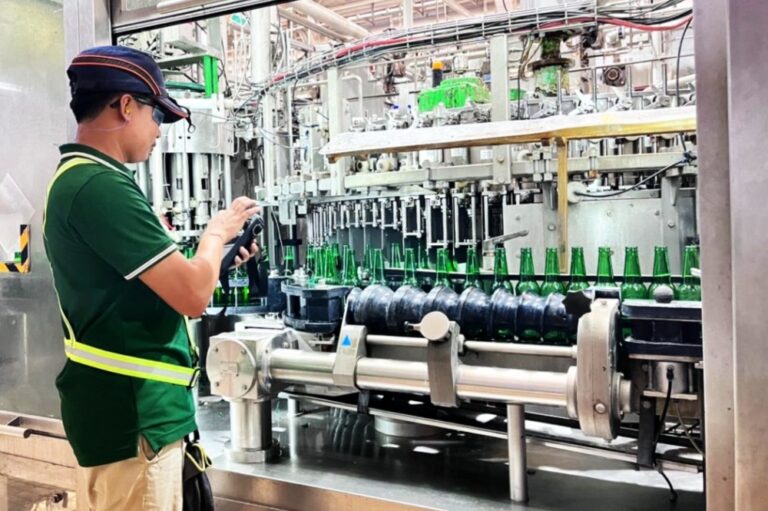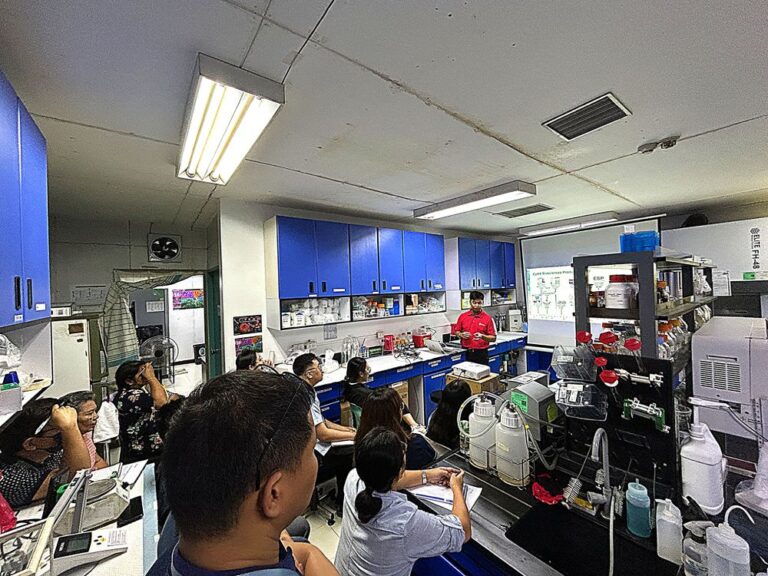How X-ray Diffraction Analysis Improves Sustainable Cement Quality and Clinker Reduction
Author: Kristian Jude Borres, Application Specialist, DKSH Market Expansion Services

Table of Contents:
- X-ray Diffraction for Sustainable Cement Production and Clinker Reduction
- The Role of Clinker, CO₂ Emissions, and the Need for Green Cement Innovation
- How XRD and XRF Were Used to Analyze Cement Mineralogy and Predict Strength
- Comparing XRD with Bogue, and Predictive Insights into Cement Performance
- Conclusion: Optimizing Cement Performance and CO₂ Reduction with XRD
X-ray Diffraction for Sustainable Cement Production and Clinker Reduction
As the cement industry becomes one of the largest contributors to global greenhouse gas emissions, many companies are increasingly investing in and focusing on making their cement production more sustainable or “greener.” Two key approaches are reducing the use of clinker (a primary ingredient in cement) and utilizing alternative fuels. This study focused on how X-ray Diffraction helps cement manufacturing address the challenges with the first approach: to cut the usage of clinker, by introduction of alternative raw materials, improving clinker quality, and somehow predict the quality of the product for better optimization.
The Role of Clinker, CO₂ Emissions, and the Need for Green Cement Innovation
Sustainability is a pressing topic for the building materials industry. Currently, the cement industry emits 7-8% of global CO2 emissions, mainly produced by limestone calcination during clinker production. Customers – including public procurement bodies, affluent buyers as well as individuals – are paying more and more attention to sustainability, and there are now international commitments to emissions reductions in Europe, the US, Latin America, and Asia.
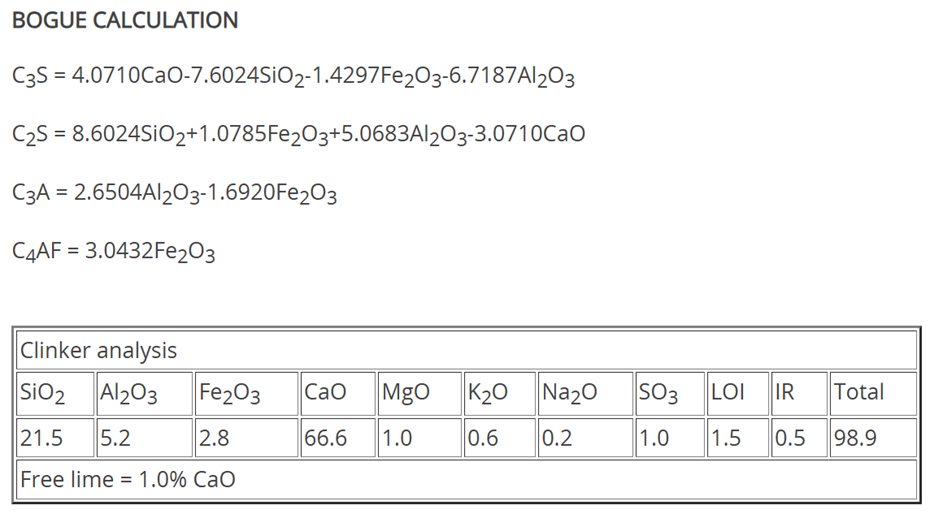
Traditional Quality Control Practices in Cement Manufacturing:
The typical Cement Plants are using XRF to monitor the elemental quantification of the cement. Using theoretical assumptions, The Bogue Calculation (see Figure 1), all the mineral phases of the cement were calculated. It is important to remember that these assumed compositions are only approximations to the actual compositions of the minerals.
Limitations of the Bogue Method:
The Bogue calculation provides only theoretical estimations, not the “true” amounts of the four main clinker phases, even though this is often overlooked
- The results of the Bogue calculation differ from the ‘true’ amounts (often called the phase proportions) principally because the actual mineral compositions differ – often only slightly, but occasionally more so and particularly in the case of the ferrite phase, from the pure phase compositions assumed in the calculation
- It often misrepresents the ferrite phase, leading to inaccurate assumptions about clinker structure
- Results may diverge from real phase proportions due to:
- Variations in actual mineral compositions
- Structural differences in polymorphic forms
These limitations present significant challenges for cement manufacturers trying to maintain cement quality while reducing clinker content. Since Bogue mineral data is calculated from XRF and not directly measured, it becomes harder to correlate cement quality directly with process improvements, all while optimizing both cement and clinker quality.
Why XRD Provides an Advantage:
XRD method on the other hand, gives more realistic and accurate data when it comes to sample mineralogy. Using XRD, we can gather more data to improve our understanding of how these phases and minerals inside the clinker affect the physical properties of our cement.
How XRD and XRF Were Used to Analyze Cement Mineralogy and Predict Strength
XRD analysis is a form of mineralogical and crystalline phase analysis. X-rays probe the distances between atoms, as expressed by the Bragg law. XRD software then compares the measured distances with database values and identifies the various mineral components.
This study is divided into two parts:
- Comparison of XRF Bogue minerals and XRD quantification results and study the correlations of these minerals in the Physical Properties and Chemical properties of the Cement
- Create a model of predicting the Physical Properties of Cement using both XRF and XRD Results
All samples were measured using Zetium 4KW Rh Anode tube WD XRF and Aeris Compact XRD Cu anode tube. All other tests were performed by our partnered cement manufacturing plants.
Comparing XRD with Bogue, and Predictive Insights into Cement Performance
There are significant to minor discrepancies in the results from both XRD and XRF Bogue analyses. Additionally, the absence of phase information is another issue encountered when relying solely on the Bogue formula. In clinker, C3S can exist in either the M1 or M3 form, and these two phases interact differently with cement performance. Similarly, C2S can be present in alpha, beta, or gamma forms, while C3A can occur in either cubic or orthorhombic forms.

Strong correlations were observed between XRD mineralogy and key physical properties of cement:
- Free lime content correlated significantly with cement expansion properties
- Calcite presence showed a relationship with loss on ignition (LOI)
- Comparison of the calculated Bogue C3S and Alite XRD results revealed a notable pattern when correlated with the early compressive strengths of the cement
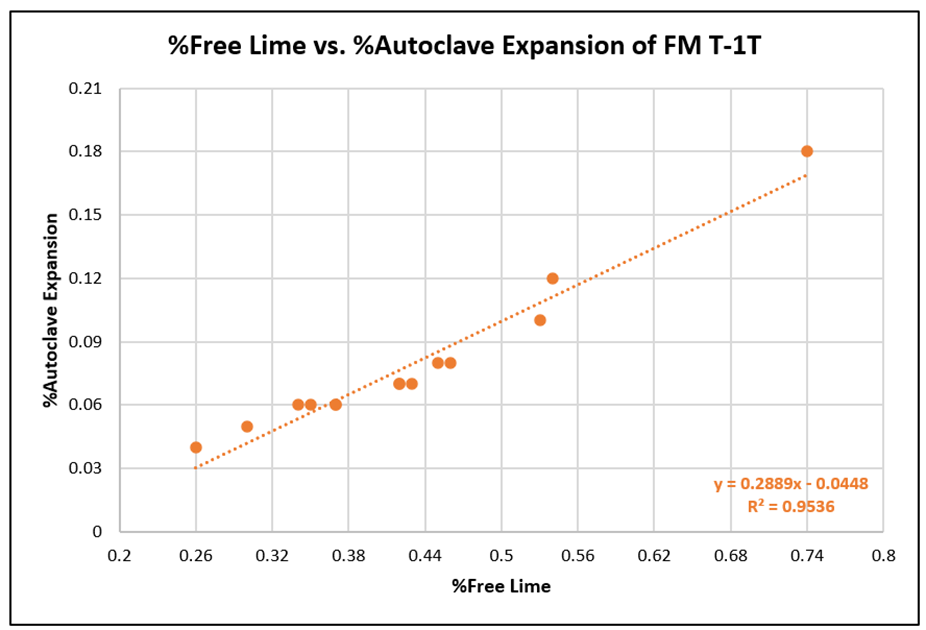
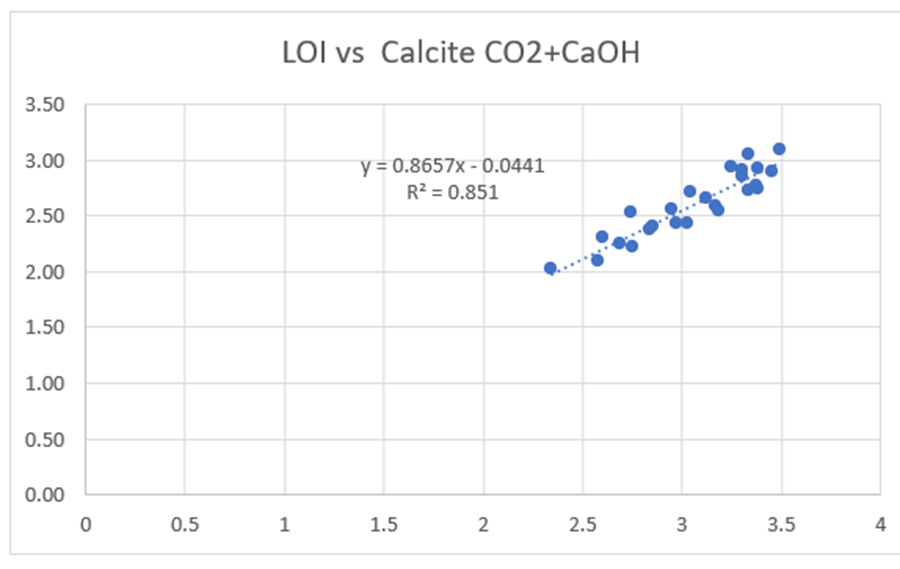
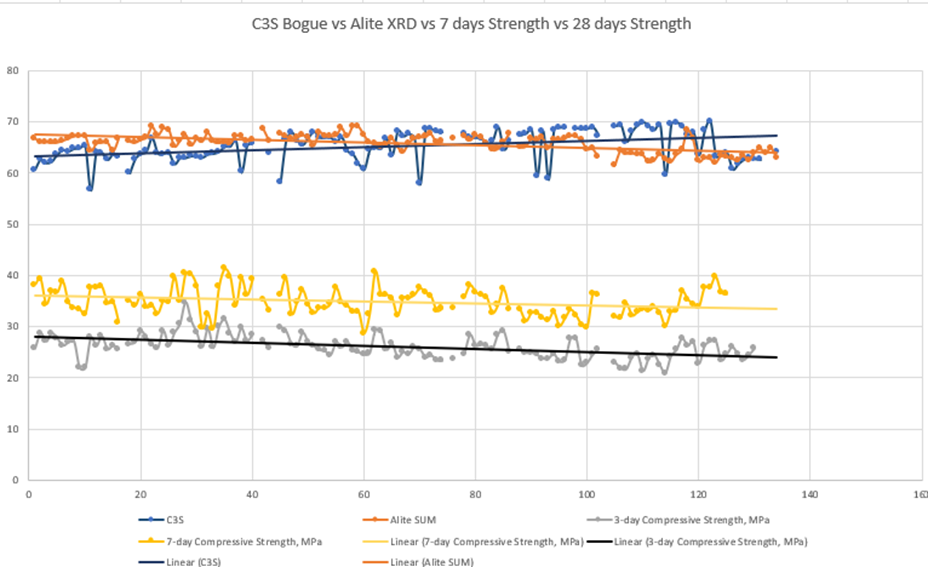
A predictive model for 28-day compressive strength of cement was developed by combining data from X-ray Diffraction (XRD), X-ray Fluorescence (XRF), and various physical properties of the cement. The analysis used a two-way ANOVA statistical method, based on a diverse set of sample batches.
Key variables that showed strong correlation with compressive strength included:
- 7-day strength
- Free lime
- Portlandite
- Belite Alpha
- Belite Gamma
- SO₃ (sulfur trioxide)
- Alite M1
- Alite M3
To validate the model:
- 20 cement samples were tested across a 20-day period
- Predicted values were compared against actual compressive strength results
- The model demonstrated high accuracy, with a relative percent difference of less than 5%
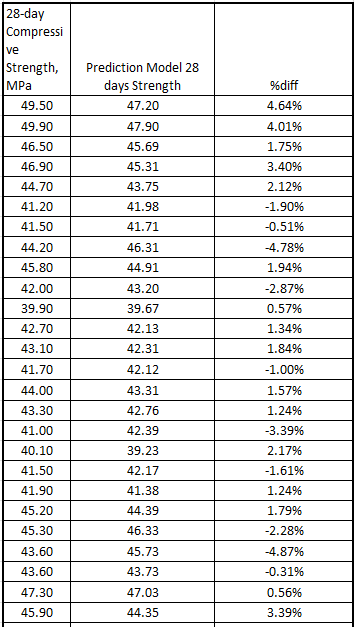
Conclusion: Optimizing Cement Performance and CO₂ Reduction with XRD
XRD mineralogical analysis provides valuable and reliable insights into the mineralogical properties of cement. By understanding the relationship between these mineralogical properties and the physical properties of the cement, manufacturers can optimize their processes and improve product quality, all while advancing sustainability goals. These studies highlight the potential for developing robust predictive models for various cement properties. A reliable prediction model would enhance the ability to adjust different cement materials and improve both quality control and process control within cement manufacturing.
References:
- Bogue calculation. (n.d.). https://www.understanding-cement.com/bogue.html
- Marielle Goubard. www2.malvernpanalytical.com/l/345261/2021-11-16/5rq69d

About the Author
Kristian Jude Borres is a licensed Chemical Engineer and Chemical Technician with a degree in B.S. Chemical Engineering from Mapúa Institute of Technology. He brings nearly eight years of experience in the cement industry, where he specialized in material characterization and laboratory automation. At DKSH, Jude serves as the Application Specialist for Malvern Panalytical products, supporting customers across various industries. His expertise spans a range of analytical techniques, including X-ray fluorescence (XRF), X-ray diffraction (XRD), laser diffraction, and dynamic light scattering (DLS). He works closely with laboratories to help them optimize their testing processes through effective application of spectrometry and spectroscopy technologies.
Kristian Jude Borres
Material Characterization and Laboratory Automation


